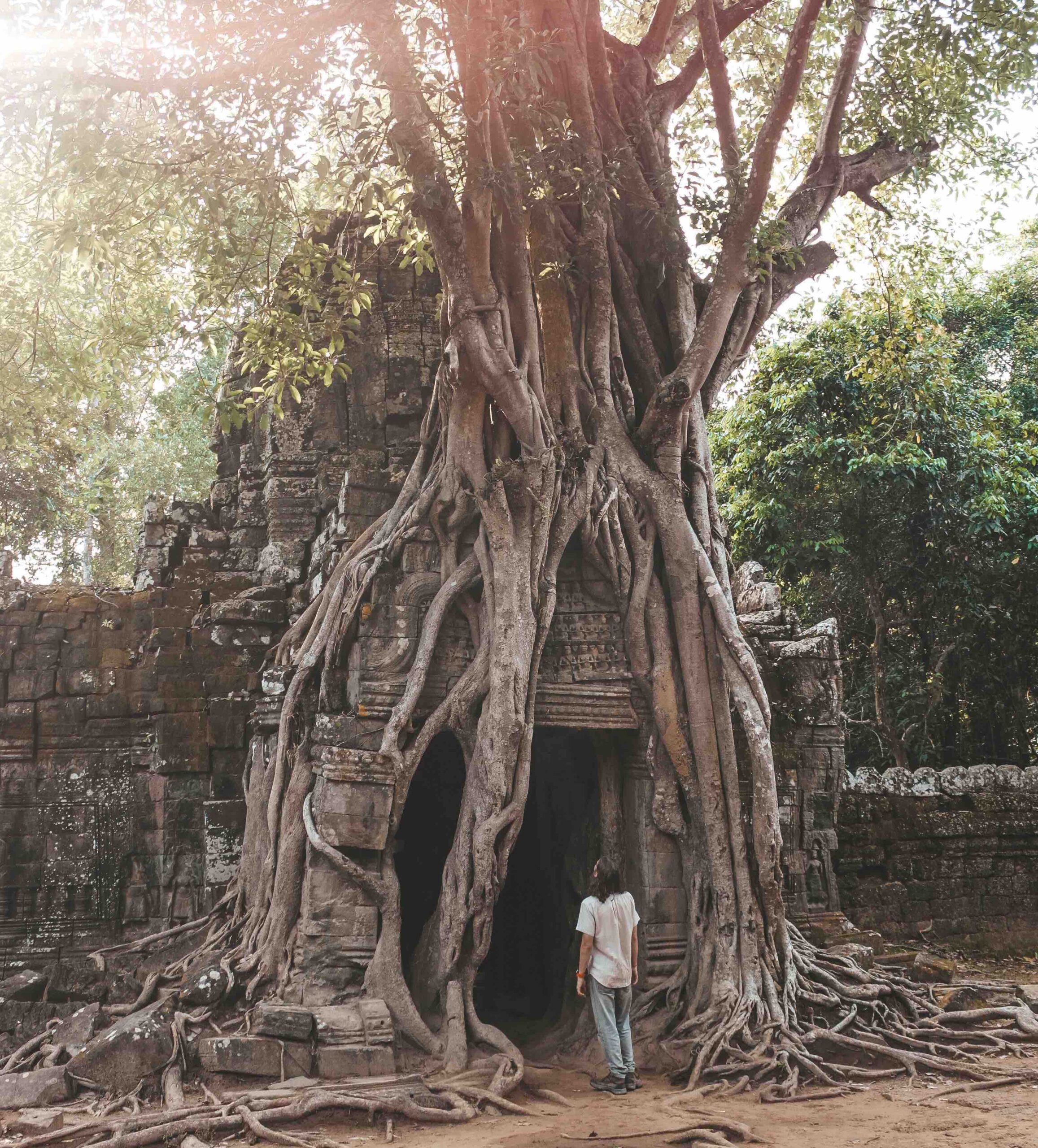A Path Less Traveled: Seeking Solitude in Angkor’s Outer Temples
Deep in the heart of Cambodia, the ancient city of Angkor sprawls across the landscape, a testament to the might and spirituality of the Khmer Empire. While the majestic Angkor Wat commands the spotlight, a constellation of outer temples lies scattered across the forest, offering a path less traveled for those seeking solitude and a deeper connection to Cambodia’s enigmatic past. This journey into the quiet corners of Angkor reveals the beauty and tranquility of its lesser-known temples, where silence speaks volumes and every stone tells a story.
Banteay Srei: The Jewel of Khmer Art
Beyond the main circuit lies Banteay Srei, often heralded as the pinnacle of Khmer artistry. This 10th-century temple, dedicated to the Hindu god Shiva, is renowned for its intricate carvings in pink sandstone, depicting scenes from the Ramayana. Its smaller scale and the detailed craftsmanship offer a stark contrast to Angkor’s grandeur, inviting visitors to linger over the exquisite depictions of deities and demons.
Ta Som: Embraced by Nature
Ta Som, a late 12th-century temple, offers a glimpse into the harmonious coexistence of man-made structures and nature. Here, a giant fig tree has famously engulfed one of the temple’s gates, a vivid illustration of nature reclaiming the ruins. The temple’s serene atmosphere is magnified by its relative solitude, allowing for a reflective exploration of its corridors and courtyards, undisturbed.
Preah Khan: A Sanctuary of Peace
Preah Khan, once a bustling city and center for Buddhist scholarship, now stands as a sanctuary of peace amid the jungle. Its extensive grounds encompass a labyrinth of rooms and corridors, adorned with apsaras and garudas. The temple’s aura of tranquility is profound, inviting visitors to wander its passageways in solitude, contemplating the impermanence of empires and the enduring beauty of their creations.
Neak Pean: A Symbol of Healing
At the heart of a man-made reservoir stands Neak Pean, a small yet significant temple built by Jayavarman VII. This temple, unique for its central pool surrounded by four smaller basins, represents the Himalayan lake Anavatapta, believed to cure illness. Visiting Neak Pean, a visitor finds not only architectural ingenuity but also a quiet space for meditation and reflection on the ancient Khmer understanding of health and harmony.
Phnom Bakheng: Sunset in Solitude
While most sunset seekers flock to Angkor Wat or Phnom Bakheng’s main terrace, the surrounding area offers tranquil spots for those willing to venture off the beaten path. A walk around the base of the hill reveals lesser-known vantage points, where the setting sun casts a golden glow over the forest and the distant temples, far from the crowds.
Exploring With Respect
Venturing into these outer temples is a journey of discovery, but it also bears the responsibility of respect. These sites are not just tourist attractions; they are sacred grounds and part of Cambodia’s cultural heritage. Visitors are encouraged to tread lightly, preserving the silence and sanctity of these ancient wonders for future generations.
In Conclusion
Angkor’s outer temples beckon the intrepid traveler with the promise of solitude and a personal encounter with the past. In these quiet corners, the whispers of history resonate more clearly, offering a profound connection to the Khmer Empire’s legacy. A visit to these temples is a reminder of the power of seeking the path less traveled, where solitude amplifies the beauty of discovery.





